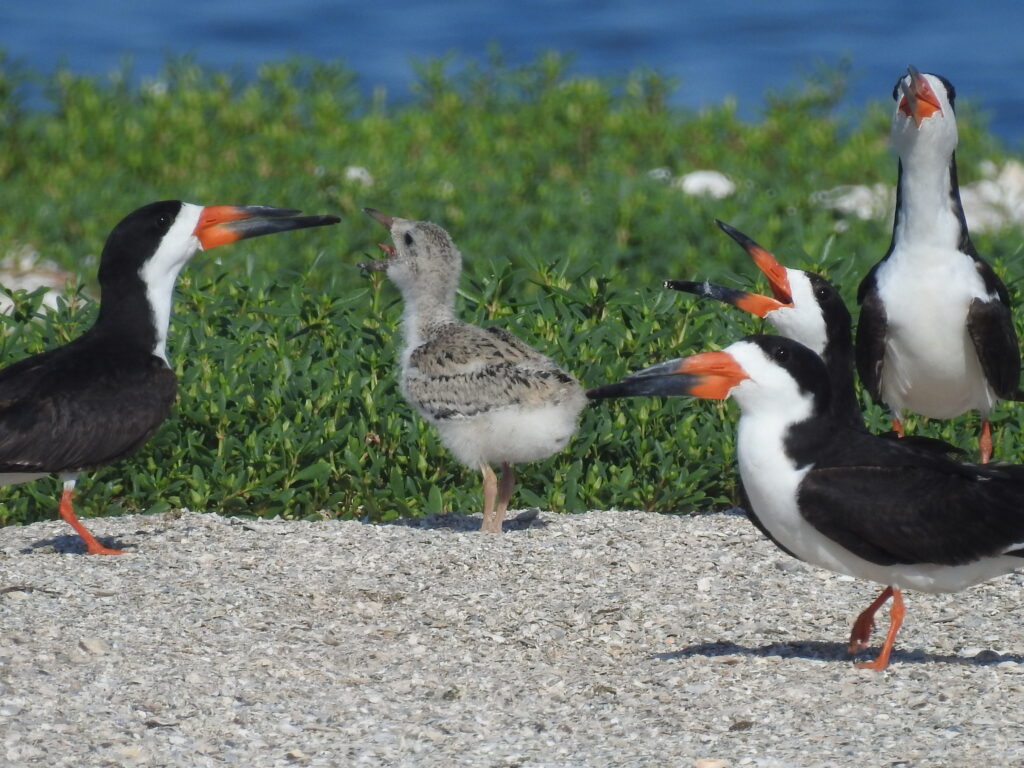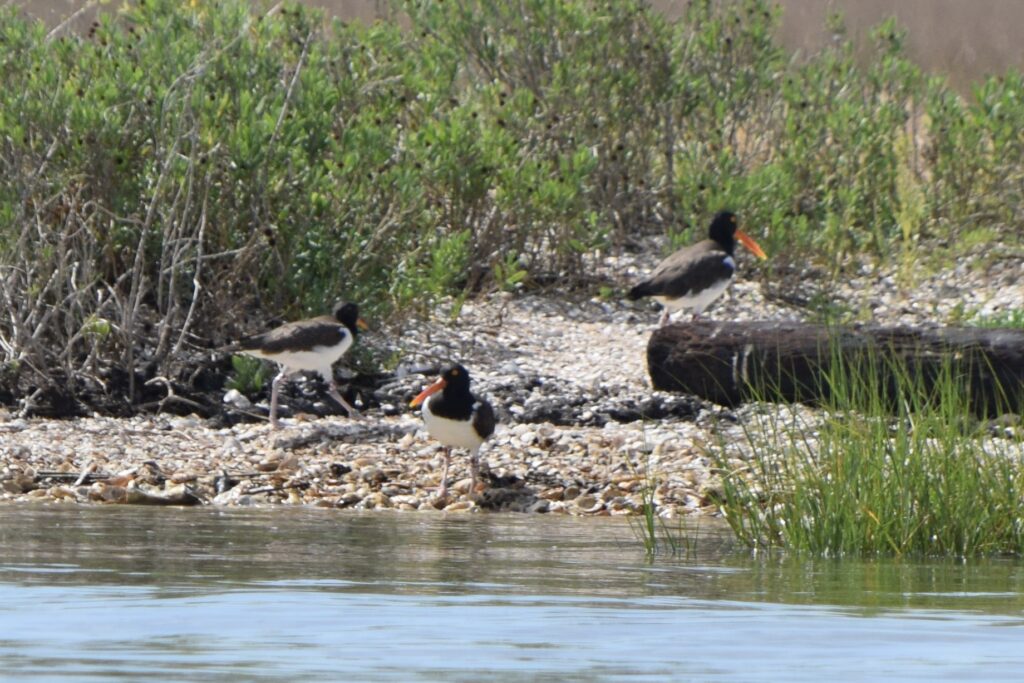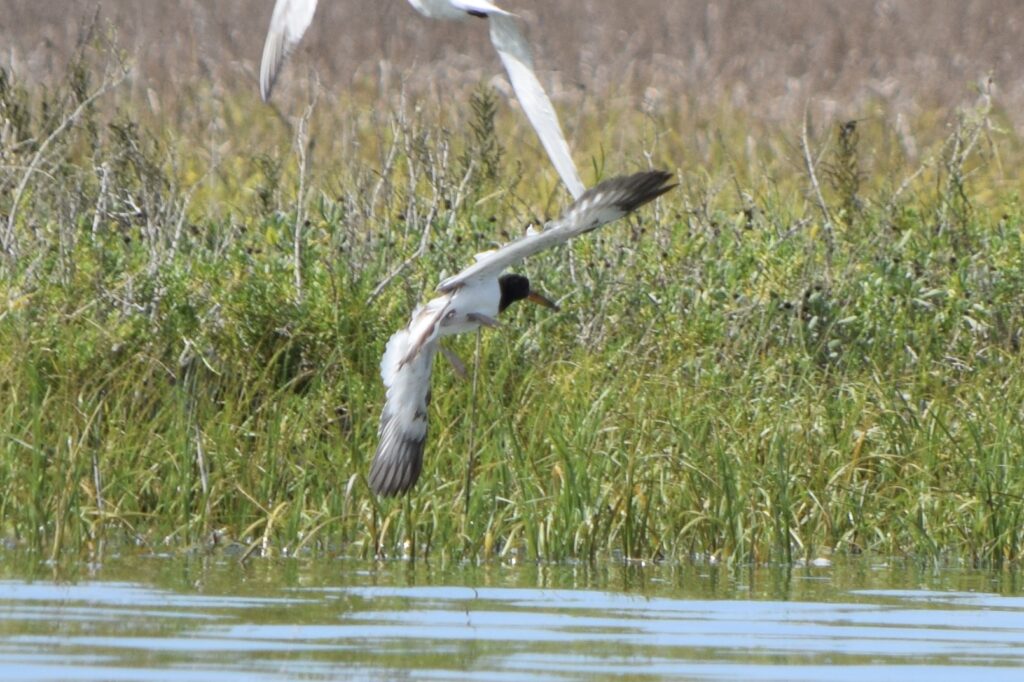By Susan Heath
Well folks the oystercatcher show has come to an end once again. The Hehir twins (Elizabeth and Elisha) joined me on Wednesday to do our Black Skimmer work and check on the last oystercatcher chick. There are still 18 skimmer nests and over 50 unfledged chicks so they won’t be done for several more weeks. It was very hot because there wasn’t much wind and all the skimmers were panting.
Fortunately, we had a large cloud over us most of the time we were watching the skimmers so it wasn’t as hot as it could have been. Unfortunately, the cloud developed into a thunderstorm and by the time we left the area, there was thunder and lightning in the distance!
We headed over to F1A & E2A’s territory to check on their chick. They were standing along the shoreline with their chick.
When the chick saw us, it ran into the vegetation to hide and I thought it wasn’t fledged yet but then it burst out of the vegetation and flew to another part of the beach. Fledged!
That’s the last one, so our oystercatcher adventures are over for another year. We will be back out in January to look for nests and see how the pairs have changed over the winter. This was a great season!
If you like oystercatchers and you want to support this project, you can make a donation (thank you!) on our website here. And how could anyone not like oystercatchers!
Current Stats for upper Texas coast from Swan Lake to East Matagorda Bay: 4 new adults banded, 0 nests being incubated, 33 failed nests, 0 nests with unfledged chicks, 0 nests with undetermined status, 25 chicks banded, 25 chicks fledged
Note: All trapping and banding for this project is in accordance with federal and state permits issued to Susan Heath, GCBO Director of Conservation Research. Bird handling by volunteers is only permitted in the presence of Susan Heath and volunteers are trained in proper bird handling techniques.



